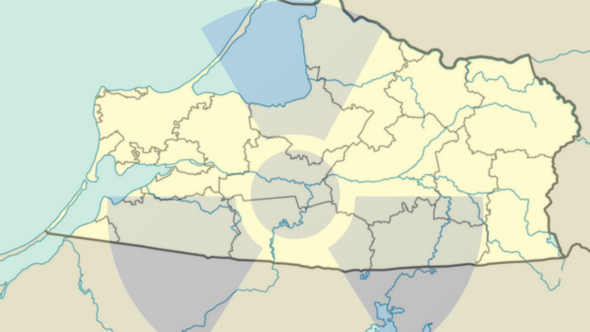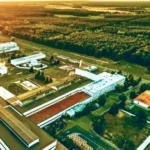In order for the Baltic Nuclear Power Plant to transmit electricity to Poland, a power connection has to be built, but it doesn’t and probably won’t have political support in Poland. However, Russians may lobby in Europe for a cable to the Kaliningrad Oblast fro a different reason – writes Wojciech Jakóbik, editor in chief at BiznesAlert.pl.
Nuclear power from the Oblast without a connection
The idea to engage Poland’s ZE PAK, which is owned by Zygmunt Solorz-Żak, in the NPP project in the Kaliningrad Oblast is bad from the point of view of Poland’s security and foreign policy, an issue Mariusz Marszałkowski wrote about. However, this project is not feasible for other reasons as well. Piotr Naimski, the Government Plenipotentiary for Strategic Energy Infrastructure, explained that according to the Polish energy law, only power plants that are constructed on the basis of Polish regulations can be connected to the grid.
However, this does not mean that a power connection with the Kaliningrad Oblast to import electricity from the Baltic Nuclear Power Plant cannot be built. For this to happen political will is necessary, and the so-called power bridge from Kaliningrad has been tested in the history of the Third Polish Republic a few times already. It requires bilateral agreements between Poland and the Russian Federation and between the Polish grid operator PSE and its Russian counterpart Rosset (FGC UES). There is no political climate in Warsaw for this to happen.
The talks with ZE PAK about power imports may have started, because of the problems with high energy prices in Poland. The company’s response is to invest in renewable energy sources and green hydrogen. It will import first electrolyzers to Poland. They may be powered with the mentioned renewables, as well as nuclear power that could be produced in Pątnów, as one of the potential locations. The Polish Nuclear Power Program says that up to six reactors will be constructed. They are to be located in two or three facilities, depending on the technology. Reportedly the first one is to be built in Pomerania, perhaps Bełchatów will be next, and then Pątnów (Greater Poland region – ed.). The NPP in Greater Poland could also power Solorz-Żak’s electrolyzers. It is also worth mentioning that Russians will promote hydrogen generation from their nuclear power in the EU as well. Purple hydrogen will be either zero- or low-emission, but the fact that it will come from Russia will – as usual – create risks when it comes to the security of supply, and hook Europe on another Russian gas. A better alternative is the Polish purple hydrogen that will be generated in result of the Polish Nuclear Power Programme.
Getting power from the Kaliningrad Oblast is such an uncomfortable topic in Poland that few people want to comment on it without holding on to their anonymity. Government representatives don’t want it to become bigger than it is, as some of them believe it is just a pseudo-event with an unaccounted origin. One of BiznesAlert.pl’s sources at the government claims that a power bridge with the Oblast will not be built, especially considering the fact that the Baltic states are synchronising their grids with the continental system via Poland, using the underwater cable HVDC Harmony Link. Once the Baltic states cease to be a power island, it may turn out that the Russian exclave will become one, as it will be surrounded by a European system that operates at a different frequency. Another source of ours claims that the talks between the government and investors did not result in any decisions. Meanwhile, our interlocutors from the private sector believe that perhaps someone wanted to pull the rug from under ZE PAK.
Another reason for promoting the NPP in Kaliningad
Russia taking shots at cooperation with Europe with regard to power generation may be its attempt at opening a discussion on the future of the Kaliningrad Oblast. In the years to come they may demand that it is synchronised with the EU, unless they fail to make it self-sufficient when it comes to energy. This will be possible thanks to the development of power generation from gas. As recently as in 2019 President Vladimir Putin announced that the Pregolsky Gas Power Plant, which was commissioned in that year, will give the Oblast an aggregate generation capacity of 1 GW, which will be enough for Kaliningrad to be self-sufficient. This is why the Baltic NPP is perceived as a facility built to export power, much like the Belarusian Astravets NPP, which has become a hot topic for the Baltic states. Lithuania is accusing Russia of using the plant to undermine the synchronization process and derail new non-Russian power projects that allow the Baltic states to make themselves independent of imports from Russia. It is worth reminding that nuclear power from the Oblast has been previously promoted as an alternative to the Visaginas Power Plant in Lithuania and the Polish NPP. The idea to lower the costs of synchronization of the Baltic states with the European system by connecting them to the NPP in the Oblast was first put forward in 2014 by Rudolf Dolzer who was the facility’s advisor. The Baltic NPP once was and may become yet again a tool in the Kremlin’s foreign policy toolkit.









